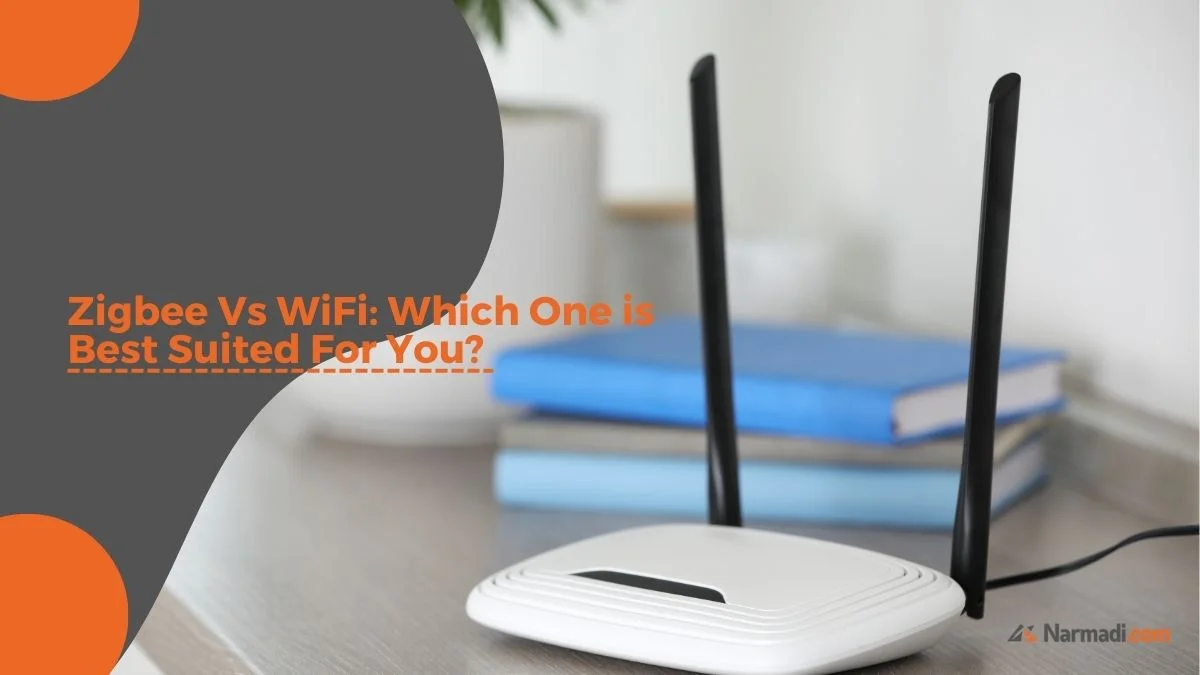Zigbee Vs WiFi – The development and history of smart home technology is rapidly evolving and reshaping our way of life into a better and more convenient direction since its dawn back in the 19th century and has been a part of our home and also our daily life and routines ever since.
With the ever growing competition in wireless technology, systems like WiFi and Zigbee are gradually becoming mainstream in the consumer technology market and has been used in many smart home devices.
So, you might be a little bit wondering which one is best suited for your home? Which one is better: Zigbee or WiFi?
Also Read
Without further ado, we’ll provide you with this information about Zigbee Vs WiFi that might be a crucial factor in your decision-making process.
Let’s get going!
Table of Contents
Zigbee Vs WiFi

1. Zigbee
Zigbee is an open standard wireless technology that is designed specifically for low-power, low-data-rate applications. It uses the 802.15.4 network standard and serves as an alternative to WiFi.
It’s primarily used in many types of smart home devices, ranging from security sensors to smart thermostats.
It operates using a mesh network topology to ensure that smart devices can communicate to each other without the presence of an internet connection.
Each device forms part of a mesh structure that’ll ensure the reliability and robustness of the entire network that even if some devices fail, the entire system remains unaffected.
The system includes coordinators, routers and end devices that are all working simultaneously to facilitate data transmission and processing.
The Zigbee technology communicates in the 2.4GHz frequency band, thus making it suitable for battery-powered devices due to its low power consumption.
And in addition to that, Zigbee is also able to provide a multi-layered security mechanism to protect the integrity of communication data.
Here are the pros and cons of Zigbee for your consideration:
Pros:
- Secure and Energy-Efficient: Zigbee boasts energy saving features that can extend battery life thus reducing maintenance cost. Aside from that, its strong security is also a big advantage for Zigbee.
- High Device Connectivity: Zigbee can support thousands of devices, so it’s perfect for large smart home setups.
- Mesh Network Topology: It provides a reliable network with multiple data transmission paths that can minimize failures.
- Bidirectional Communication: Zigbee allows the devices to send and receive signals simultaneously. It can enhance interactivity.
Cons:
- Little More Complex: If you’re connecting many devices at once, it may increase the system’s management complexity that requires more attention and maintenance.
- Limited Data Rate: It can be a little too slow to fulfill the needs of high-speed applications, especially those involving videos.
- Reliance on Signal Repeaters: You may need a signal repeater to expand communication range.
2. WiFi
The next one is the more well-known wireless connection, the WiFi. WiFi protocol itself refers to a set of standards that is used for wireless communication over a WiFi network.
It is defined how any devices communicate with each other and the network, that inturn will ensure compatibility and efficient data transmission.
WiFi protocols that are commonly used are 802.11a, 802.11b, 802.11g, 802.11n, 802.11ac, and 802.11ax, with each one can provide a different speeds, frequencies and features for certain networking needs.
An access point such as a router is used when a device wants to connect to a WiFi network. The said devices will send a connection request to the router, which then authenticates the device and assigns it an IP address.
Once connected, the devices can exchange data with each other or access the Internet through the access point.
The WiFi protocol employs encryption (e.g., WPA2, WPA3) to protect data from unauthorized access or interception, thus improving its security.
To help you considering, here WiFi pros and cons:
Pros:
- Convenience: WiFi can provide you with a great convenience due to its easy to set up and requires no cable for its connection.
- Scalability: WiFi connections are easily expandable for more devices compared to Zigbee.
- Mobility: As long as you’re connected to the Internet, you can stay connected with the smart home devices that connect to WiFi even while you’re on the move.
- Accessibility: It provides multiple devices that can connect simultaneously.
Cons:
- Security Risks: WiFi is considered vulnerable to breach from unauthorized devices.
- Range Limitations: The farther you, or the devices from the access points, the signal strength is going to be diminished too.
- Interference: Signals can be affected by obstacles such as thick walls, or dense furnitures.
- Bandwidth Sharing: Speeds may slow during peak times.
So there you have it! The explanation of Zigbee Vs WiFi to be used as a consideration for your smart home devices!












